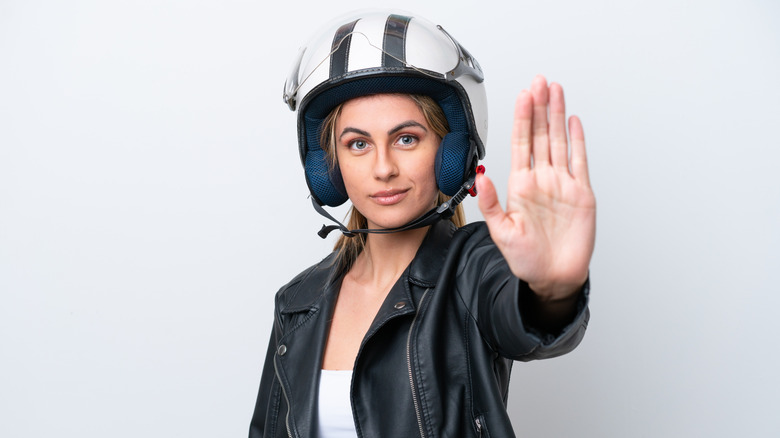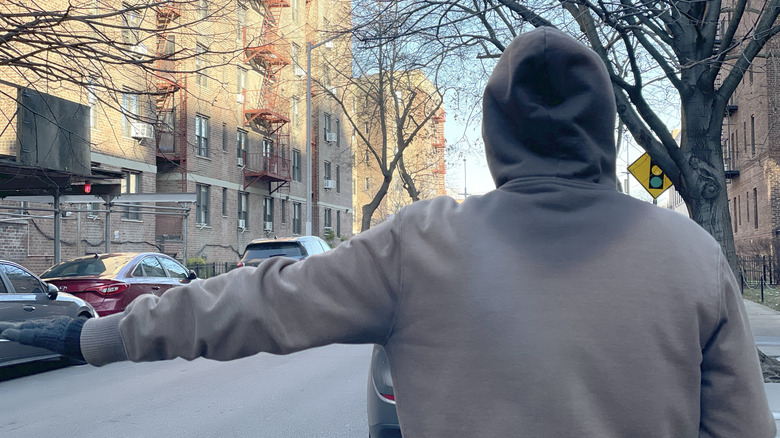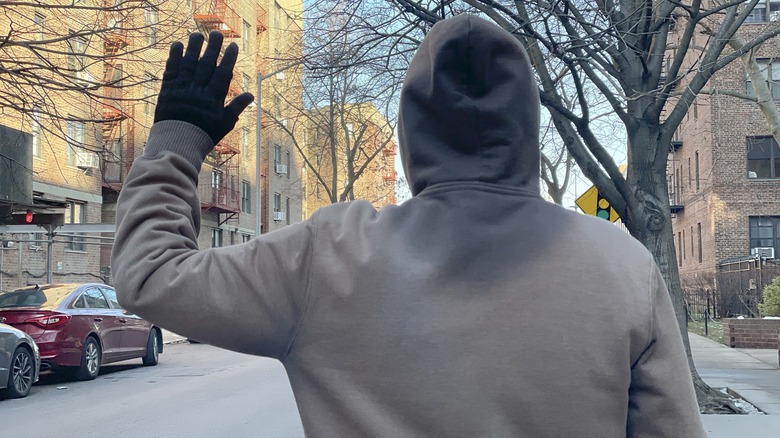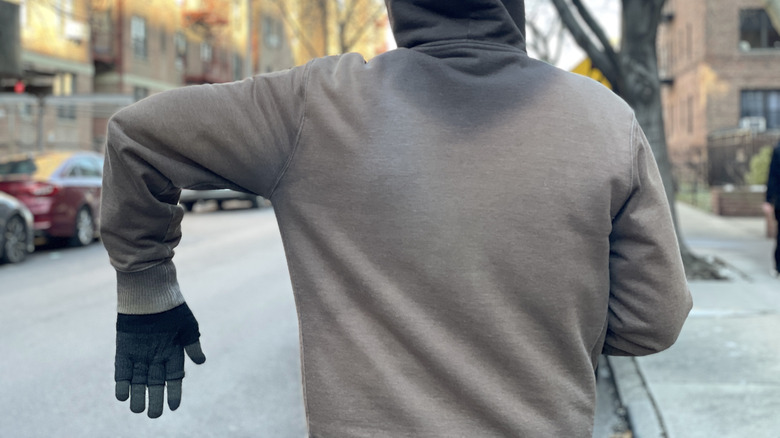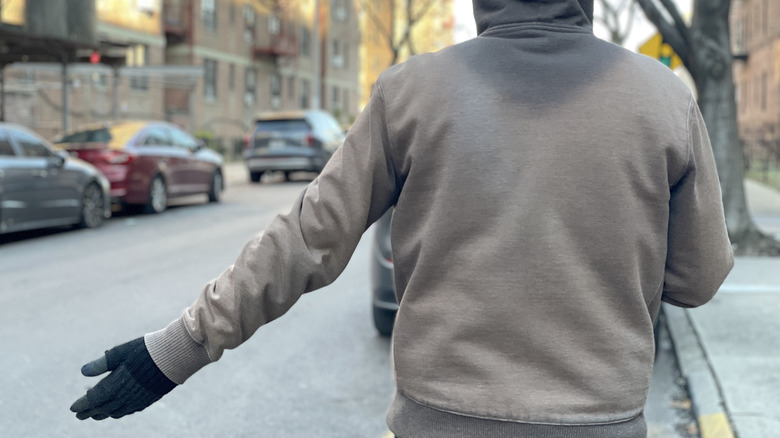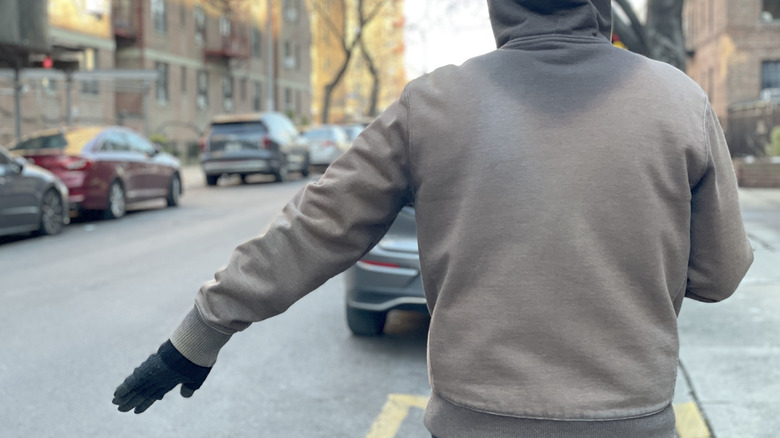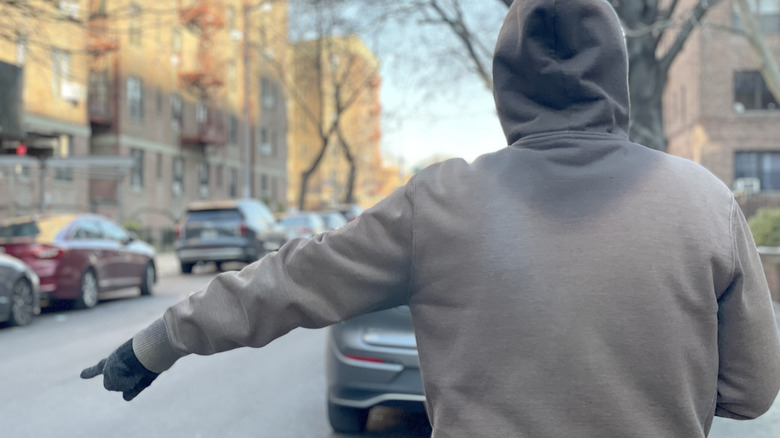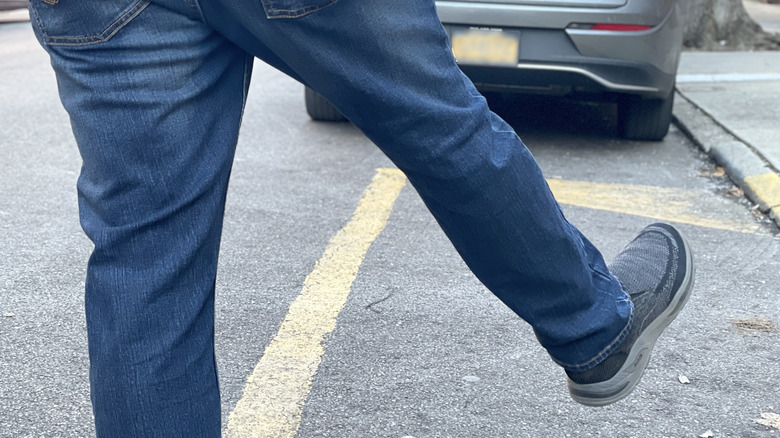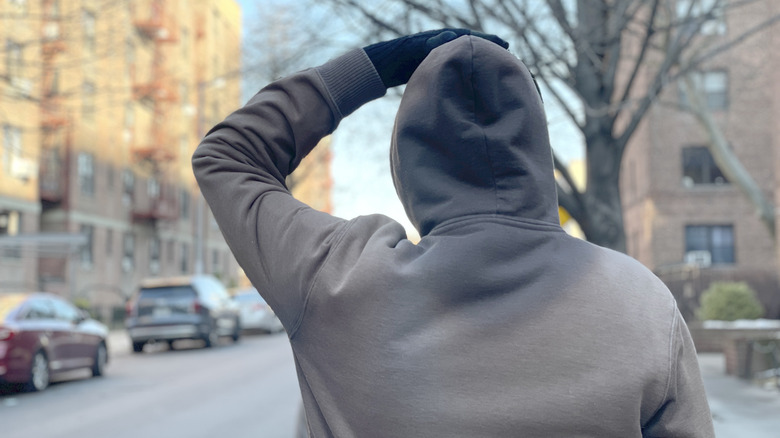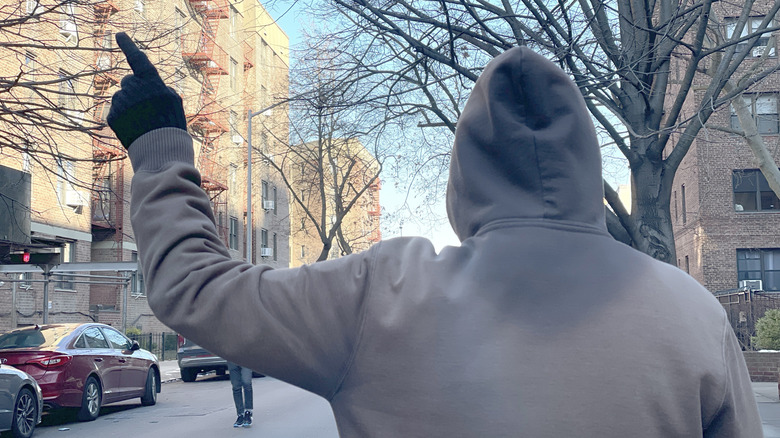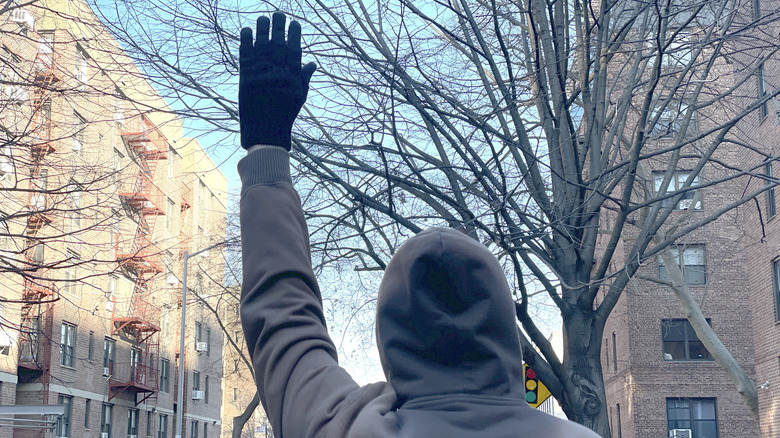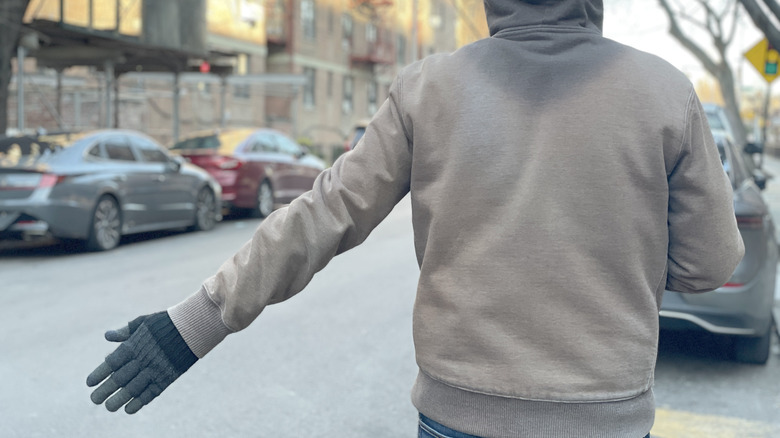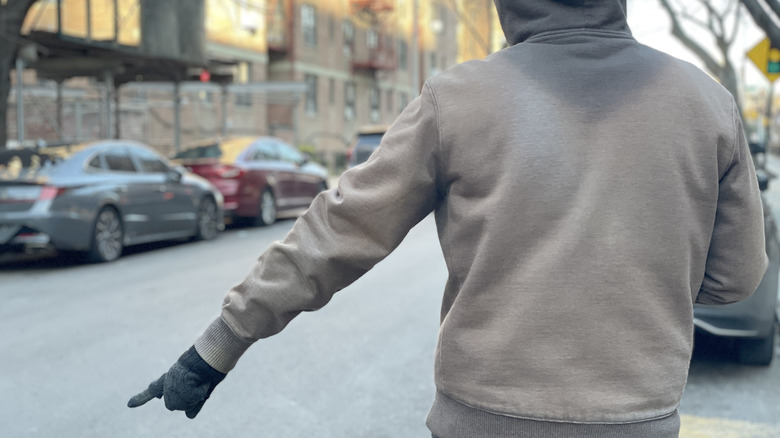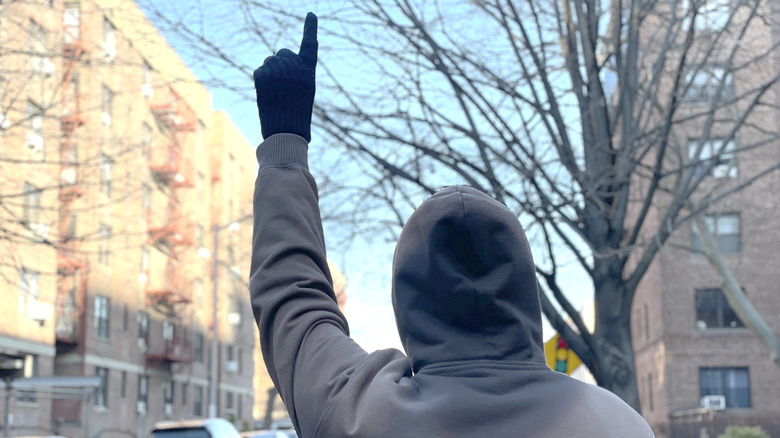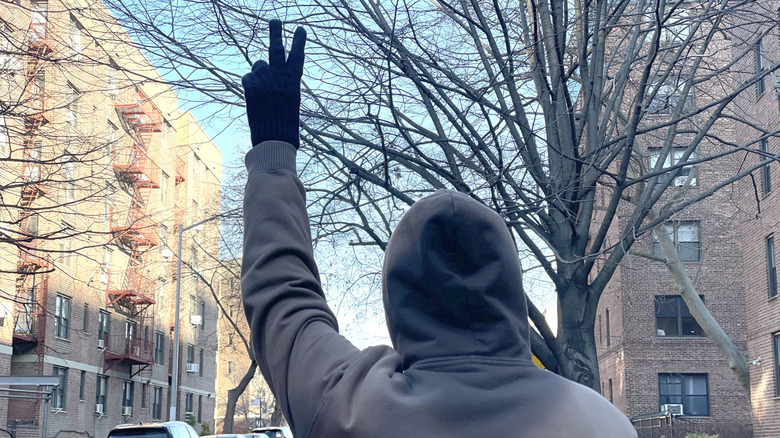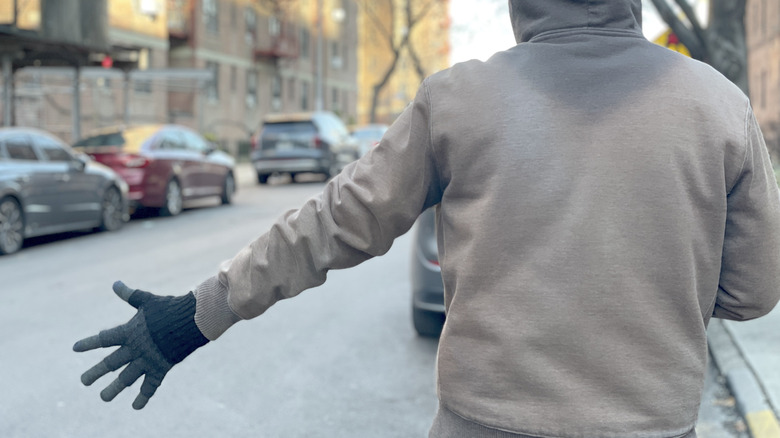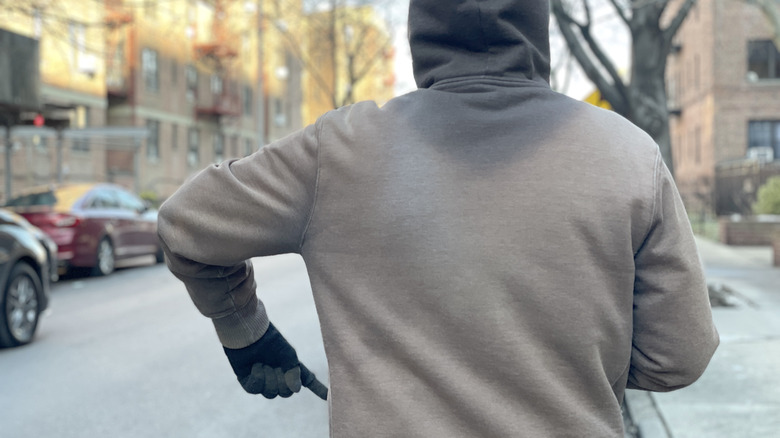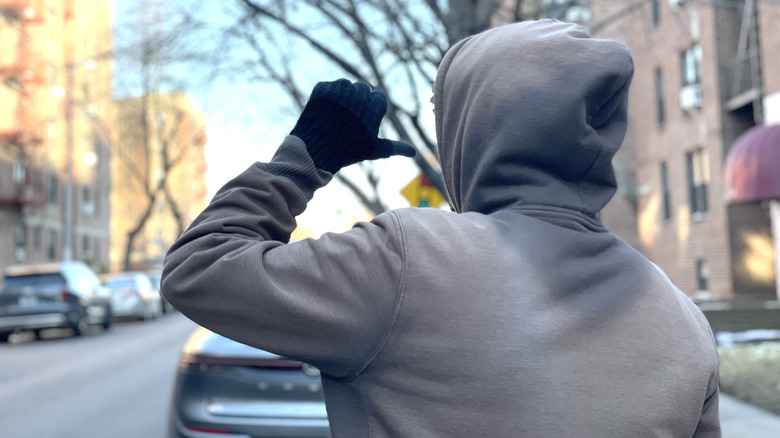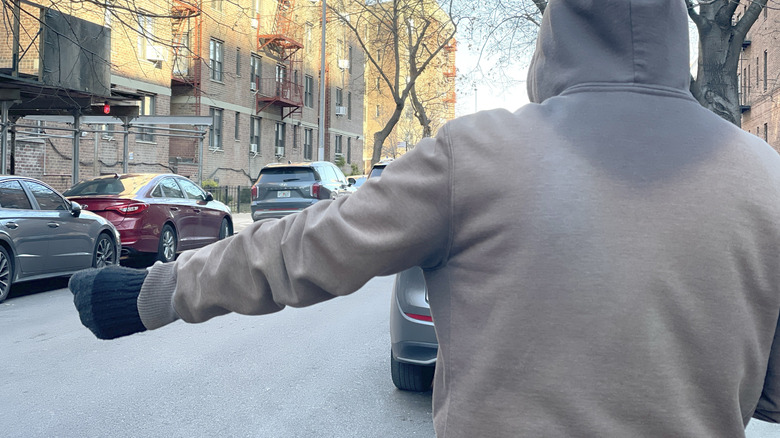18 Motorcycle Hand Signals Everyone On The Road Should Know About
A not-insignificant part of driving a vehicle of any kind, no matter how many wheels it has, is knowing the necessary methods for signaling intent — lane changes, warnings to other drivers, that sort of thing. And it's an important part of riding a motorcycle, too.
Sure you're highly unlikely to find a bike on the road these days that doesn't have functioning turn signals and brake lights, but in situations where a bike's tail lights or signals are malfunctioning motorcycle hand signals are essential. Unless it's at night, in which case hand signals will be much more difficult to see.
During the day, though, it's common for riders to use a variety of hand signals in lieu of (or in addition to) electronic ones. And while the majority of them are intended for use when riding in a group (to communicate with other riders in that group), there are also several signals that are useful for car and truck drivers to make a note of and keep "on hand" as it were.
Left turn
Turn indications are very important when driving or riding, as turning vehicles usually slow down or even stop while waiting for an opening. Letting other drivers in the vicinity know to expect this in advance makes the road a little bit safer for everyone.
In practice, the left turn hand signal is performed by the rider sticking their left arm straight out, parallel to the road, with their palm open and facing down. The arm and hand are kept out in a static position until the rider is ready to turn (or they need to place their left hand back on the handlebars). However, the exact positioning of the hand and palm may sometimes vary — such as open and facing forward, or a closed fist.
Right turn
Signaling for a right-hand turn is a similarly important practice. Also, much like a left-hand turn hand signal, it can be used to indicate a lane change to the right.
The first step of a right turn signal is much like the signal for a left-hand turn: The rider extends their left arm and hand outward, parallel to the road, but instead of leaving it parallel they then bend their arm 90-degrees straight up at the elbow and their hand clenched into a fist.
Fist clenching may not be what you see every time someone signals for a right-hand turn, though. Some may leave their hand open with the palm facing forward.
Stopping
As a rider, it's very important to let those behind you know when you're stopping. And as a driver, it's important to know when a rider ahead of you is giving you this hand signal. While it's understandable that certain situations may not allow for this particular hand signal (i.e. having to unexpectedly stop very quickly), it should be used under most riding circumstances.
To signal a stop, the rider extends their left arm outward and bends their elbow 90-degrees downward – towards the road – with their hand open and palm facing backwards. The signal should continue to be held for several seconds, if possible, to give drivers and other riders enough time to see and react to it.
Speed up
Those previous three and signals (left turn, right turn, and stopping) are important to know and use pretty much all the time. From here on out, though, the signals are more likely to be used among a group of riders. However, a few of them can still be helpful if you're behind the wheel of a four-wheeled vehicle, too.
If a rider wants or needs to increase their speed, the signal is fairly straightforward. Riders need to stick out their left arm, with their palm open and facing up, then swing their arm up and down repeatedly — usually starting from a position parallel to the road, then moving down, then back up to parallel. An alternate form of the signal involves swinging just the hand up and down, instead of the whole arm.
Slow down
Giving other riders and drivers a heads-up when slowing down, or wanting to slow down, is about as significant a safety measure as signalling when stopping. It's also a similar gesture to stopping and speeding up, so it's a good idea to be aware of the nuances.
To signal an intent to slow down, riders will hold out their left arm parallel to the road with their open palm facing down. After which they'll repeatedly swing that arm downward, then back up to parallel, back down again, and so on. Repetition is key here, as it more clearly indicates the intention and increases the likelihood that the other riders (and possibly drivers) will see the signal in the first place.
Hazard on the left
Road hazards (potholes, debris, wet pavement, leaves, and so on) can be dangerous to motorcycle riders. More so than someone driving a car, which can simply drive over many things that could potentially cause a bike to lose control or crash.
Indicating a hazard to avoid on the left requires the rider to stick out their left arm and use their index finger to point in the direction of the problem. Holding the signal for at least a few moments is also a good idea, to make sure other riders can see it as well as the upcoming danger.
Hazard on the right
Signaling for a road hazard on the right is a slightly trickier proposition, because a rider can't really use their right arm or hand for signaling (it's needed to maintain control of the throttle and front brake). Since pointing with the right hand is out, and the average human isn't stretchy enough to angle their left arm to the opposite side of their torso, another appendage is necessary.
To indicate a hazard on the right side, the rider will extend their right leg (yes, leg) out to the side instead. Pointing towards the hazard with the right foot is typically the best practice, but feet aren't quite as precise as an index finger so offering a little more time to spot things may be necessary.
Police ahead
Knowing the exact meaning behind a warning of upcoming police activity depends on the situation. In general, though, it's most likely either a speed trap or something like a traffic stop or accident — something that's best to slow down for, regardless.
The two primary ways to signal police activity is for the rider to extend their left arm, then reach up and either pat the top of their helmet or rub the top of the helmet in a circular motion. These hand motions should be fairly pronounced and exaggerated in order to make sure other riders or drivers can see them.
Pulling over
Pulling off to the side of the road in order to stop can be a tricky proposition — particularly when on the highway — but it's still necessary at times. Properly signaling this intention is in the best interest of safety, and should avoid situations where the rest of a riding group loses track of someone or has to awkwardly try and pull over farther up the road.
For this signal, the rider should extend their left arm and bend up at the elbow with their index finger extended. After which they can move their arm down at the elbow and point outward, towards the side of the road, then repeat the gesture a few times before pulling over.
Follow me
Taking the lead of a rider group does mean having influence over everyone's pace, when everyone should change lanes, and so on, but it's also not a position to be taken lightly. Lead riders should be experienced, familiar with any pre-planned routes, regularly check on the other riders via the side mirrors, and know what to do if emergencies and other unexpected situations arise.
This particular hand signal is pretty simple to perform. The rider must raise their left arm straight up with their palm facing forward, then hold it there for a few moments — long enough for the other riders to take notice. It's very similar to raising a hand to answer questions in a classroom, except here you're riding a motorcycle.
Somebody else lead
There may be times when the leader of a riding group needs someone else to take over, in which case they'll need to make this known. However, other riders in the group should keep in mind that whoever moves up to take the lead should also be familiar with pre-planned routes, emergency procedures, and other important leadership duties.
When the lead rider wants someone else to take the lead, they'll extend their left arm out at a roughly 45-degree downward angle (so not parallel to the road and not straight down) with their palm open and facing forward. Then sweep the left arm from back to front several times in an arc.
Specifying someone to lead
Ideally, when the lead rider needs someone else to take over there will already be a plan for a particular person to step in. However, if necessary they can also designate a replacement leader on the road.
In order to signal for a specific rider to take over the lead position, the leader will pull alongside the chosen replacement in a parallel lane (do not ride side-by-side in the same traffic lane) and then use their left arm and index finger to point at the rider and their bike. Then sweep their arm forward to signal them to take over.
Single file
Riding in single file is often the best approach when a group is on a curvy road, dealing with poor visibility, and in other situations where extra room to maneuver is ideal. Knowing the proper hand signal to switch to single file is every bit as essential as knowing when such a switch is necessary.
To signal the group to ride single file, the leader will raise their left arm straight up at the shoulder, with their hand facing forward and index finger extended. It's very similar to the "Follow Me" signal, with the key difference being that the index finger is working as the primary single file indicator.
Double file
Contrary to the way it sounds, riding double file in a group does not mean side-by-side. Instead, double file riding (sometimes referred to as "staggered") places riders in more of a zigzag pattern in a single lane with one rider closer to the left-hand side, the next rider further back and closer to the right-hand side, and so on.
The hand signal for a change to double file will see the leader extend their left arm up at the elbow with their hand facing forward — very similar to both "Follow Me" and "Single File" signals. Except to indicate double file, they'll extend both their index and middle fingers (sort of like "two" or a peace sign).
Someone else's turn signal is still on
Anyone who's driven a car has probably left their turn signal on by accident at one point or another. Well, the same can happen to motorcycle riders. And there's a hand signal for that, too.
In order to let someone know that their turn signal is still on, a rider will extend their left arm outward with their palm facing forward and fingers splayed open. Then, while keeping their arm extended, close and reopen their fist multiple times. Depending on the location of the other rider (in front or behind), the hand signal may need to be repeated more often before they spot it.
Fuel stop
Preplanning is encouraged when a group is getting together to ride, and part of that plan includes filling up before heading out. However, if someone forgets, has a smaller tank, or their bike uses gas a little faster than the others, unscheduled stops will be necessary.
To signal the need to stop for fuel, the rider should extend their left arm out and then bend their elbow in to point at their bike's fuel tank. Alternatively, they may also pat the fuel tank with an open palm instead of pointing, though pointing is likely to send a clearer message when on the road.
Refreshment stop
Sometimes it's the riders themselves who need to fuel up, in which case it's time to stop for food or something to drink — or even just a longer than usual breather. Depending on a group's planning, a signal for a refreshment stop could mean anything from pulling into a rest stop and breaking out some snacks that were brought along to stopping at the next restaurant. Which is why it's important to plan ahead, or at least stick with the group's leader.
When signaling for a refreshment stop, the rider will close their left fist and extend their thumb, then raise their left hand up so that their thumb points towards their mouth. Or pointing towards the general vicinity of where their mouth would be, if they're wearing a motorcycle helmet (as they should, for safety's sake).
Comfort stop
Other times, a rider may need to take a break for less mechanical reasons — human or bike wise. Maybe they need to adjust their gear, which is best done when not driving. They could also just need a break because something's cramping or falling asleep. Point is, there's a designated hand signal for it.
To indicate the need for a comfort stop a rider will extend their left arm outward with their fist closed, then shake their arm up (or sometimes just their fist) and down repeatedly in short motions. Another version of this signal involves reaching back with their left arm and patting their posterior, however this signal might not be as clear when on the road as the one using an extended arm.
